Semi-Recessed Basin Buying Guide

Semi-recessed basins! What are they? Why do they exist? What kinds of bathrooms are they best suited for? These are the big questions regarding this particular basin type. As your trusty bathroom experts, we shall strive to answer them as best we can. It’s time to unpack the world of semi-recessed basins and find out exactly what their deal is.
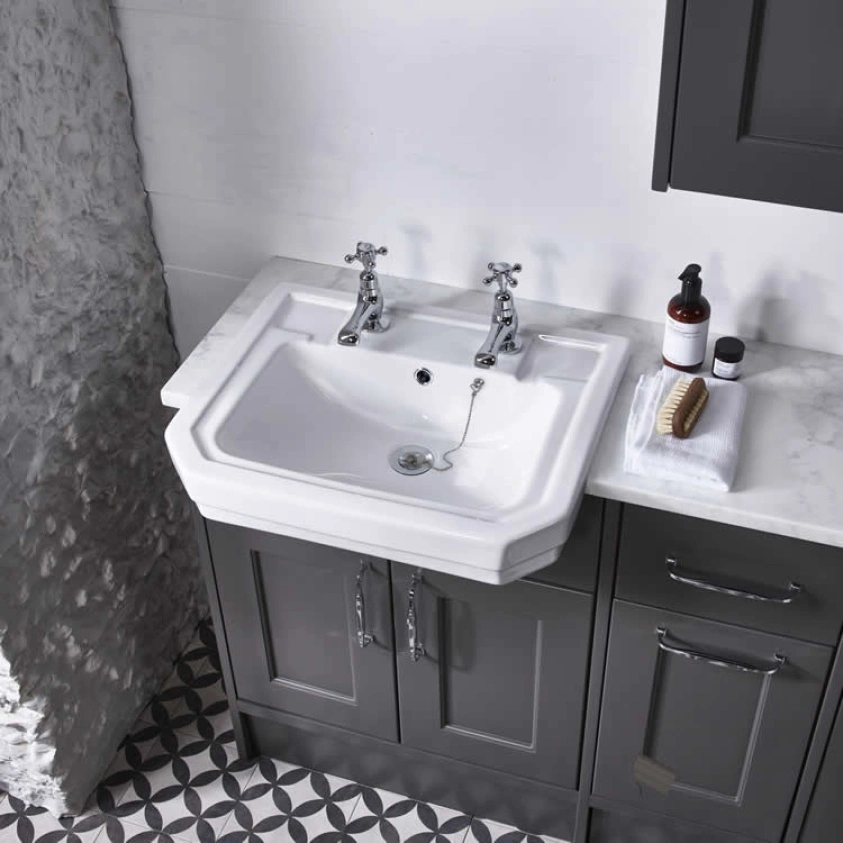
What is a semi-recessed basin? How does it differ from a fully recessed basin?
For starters, semi-recessed basins go by many different names. These include semi-countertop, overhang, half-inset and half-recessed basins. These names all mean the same thing, however, so we’ll just stick to calling them ‘semi-recessed basins’ here.
Semi-recessed basins are intended for partial worktop installation, falling somewhere between wall-hung basins and fully recessed basins. The back portion of the sink is fitted into the surface of your bathroom’s vanity unit, cabinet or surface, while the front part protrudes out beyond the surface’s edge. This contrasts with a fully recessed basin, which sits entirely within the surface with no protruding or overhanging portion.
With their unique installation and elegant looks, semi-recessed basins have carved out their own special design niche in recent years. When used properly, they can serve as a practical, space-saving and attractive bathroom solution.
How is a semi-recessed basin measured?
With their unique ‘half-in, half-out’ style, you might be wondering how you’d even go about measuring for a semi-recessed basin. The good news is, it’s not actually that complicated. You just have to measure the width and depth of the basin itself, as well as the depth of the surface you want to fit the basin to. You need to ensure that the majority of the basin can fit comfortably onto the surface, properly supporting the overhanging front section.
(Note: In this case, ‘depth’ refers to a basin’s outward length or projection, a.k.a. the distance from the back to the front)
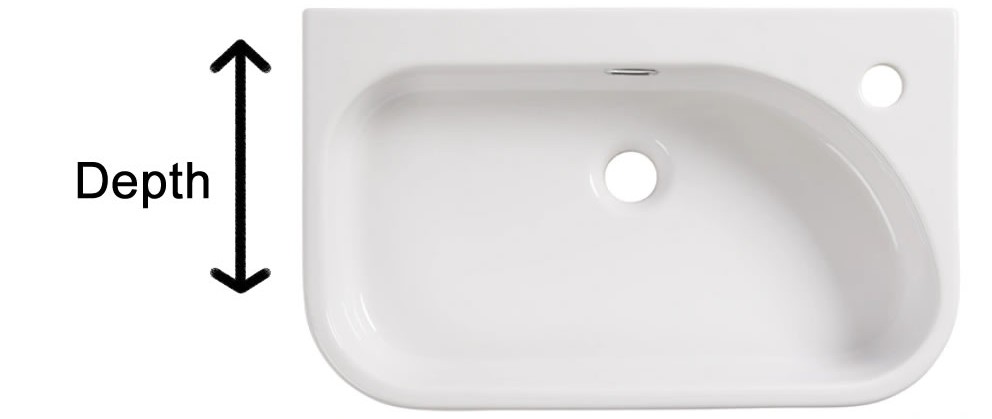
If the basin is too large for the surface, the protruding segment will stick out too far. You won’t be able to install it safely (or possibly even at all). This will result in an awkward, oversized mess with a comically huge overhang and no structural stability. Not exactly ideal!
The other important measurement e is the internal space beneath your surface. The basin will require pipework, which must be placed inside your cabinet or vanity unit underneath the sink itself. This means that the underside of the surface must include a hollow space, sufficiently large enough to accommodate the necessary plumbing.
What are the typical sizes of a semi-recessed basin?
It’s hard to really pinpoint any typical semi-recessed basin sizes. They come in a range of dimensions to suit various bathroom spaces, ranging from around 450mm to nearly 600mm in width.
As for depth, short-projection semi-recessed basins can measure as little as 350mm overall, with under 200mm making up the protruding section. On the other hand, Large semi-recessed sinks can feature depths of up to 450mm, although the overhang will make up just a small portion of this.
Basically, whatever size you’re looking for, you shouldn’t have any problem finding a semi-recessed basin to match your needs. You just need to ensure it’s suitable for the surface you’re working with.
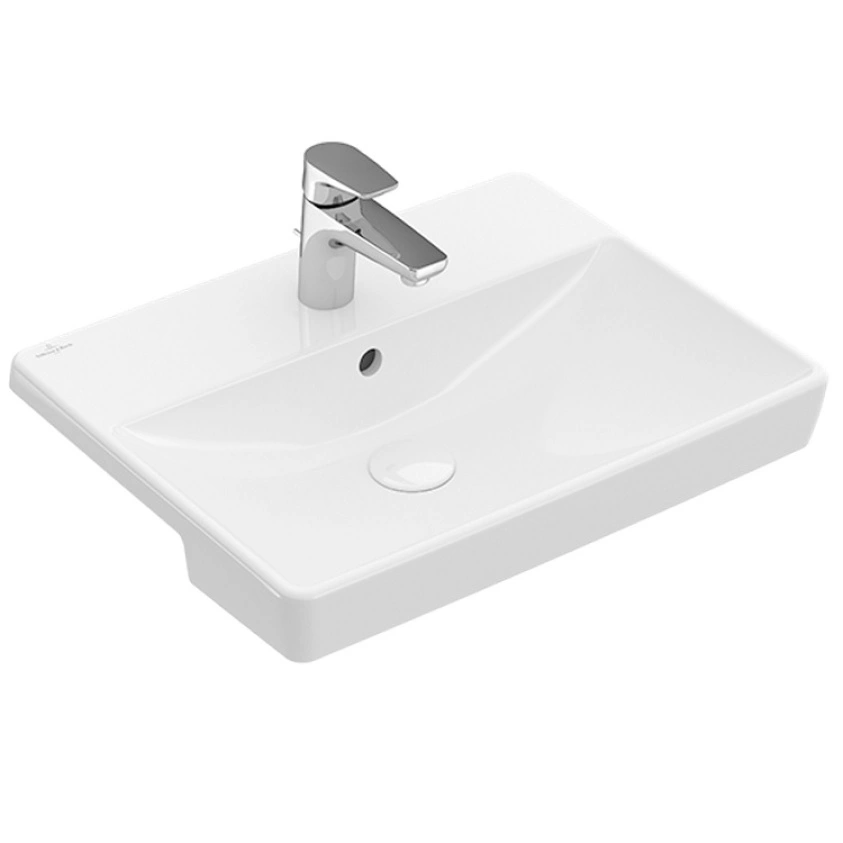
What are the most common semi-recessed basin shapes?
Like other basin types, semi-recessed sinks come in a selection of shapes and styles. The most common is rectangular, with various manufacturers putting their own spin on this practical and adaptable design. From sparse contemporary models to decorative traditional variants, rectangular semi-recessed basins are the go-to choice for many.
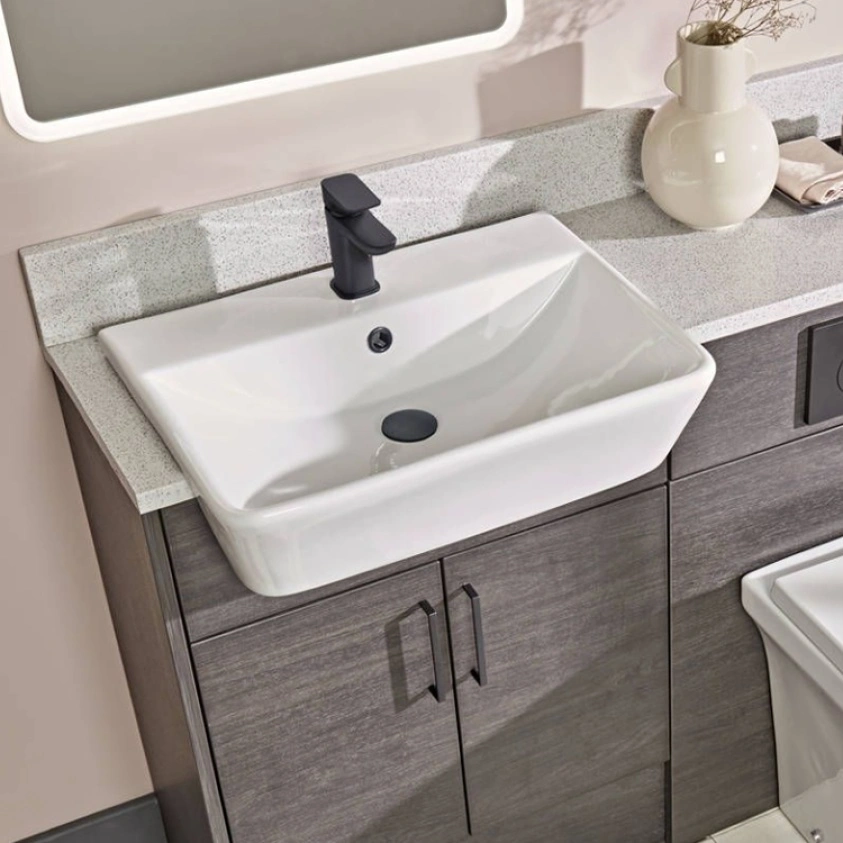
If you fancy something a different, you can also choose a round semi-recessed sink or an oval semi-recessed sink. Eschewing bold angles for sleek curves, these sinks fit nicely into tranquil modern bathrooms.
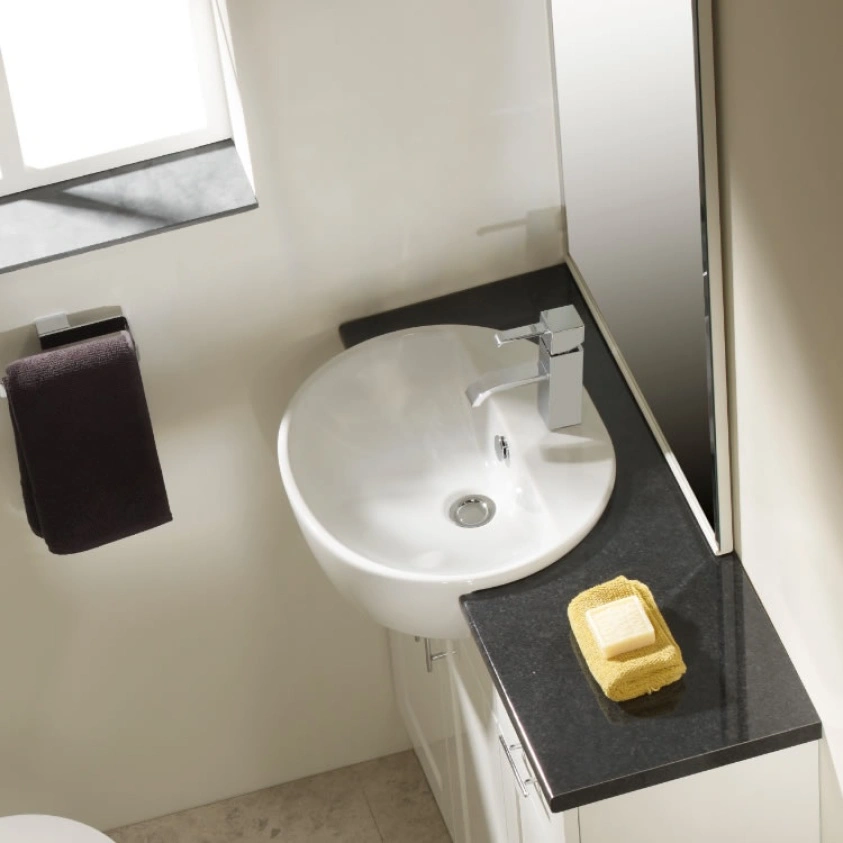
What materials are commonly used for semi-recessed basins?
Most semi-recessed basins are built from sanitary ceramic. As well as ensuring durability, scratch-resistance and a smooth gloss finish, this substance is easy to clean and repair if necessary.
Some models use an upgraded glazed ceramic known as vitreous china, which enhances the glass-like gloss. Vitreous china also improves strength and density, resulting in a superior finish.
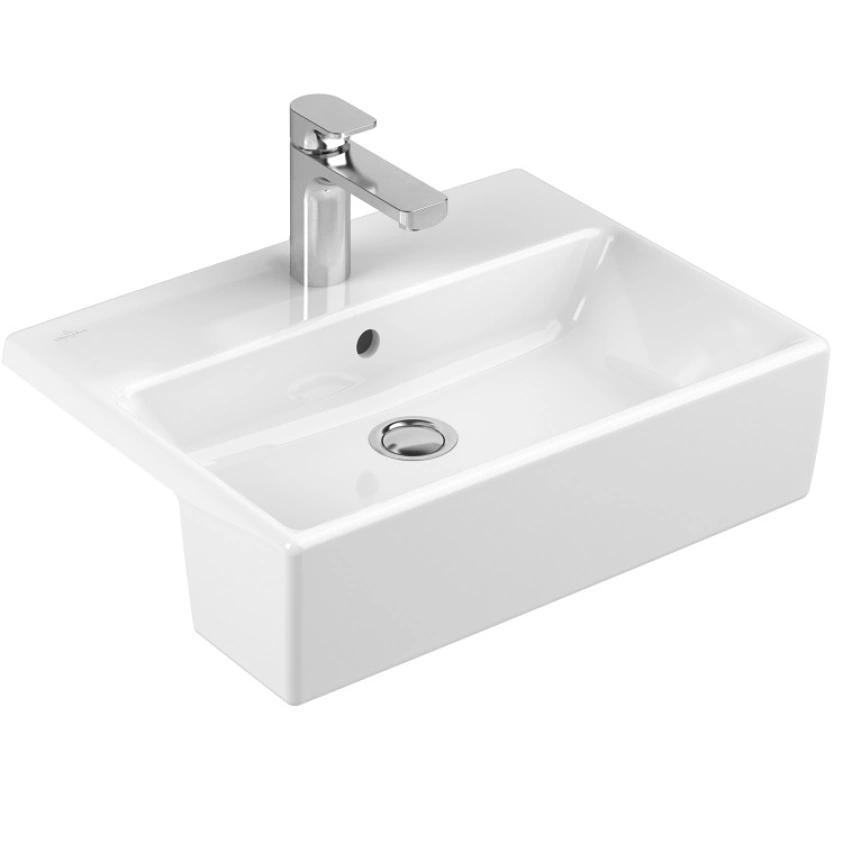
While ceramic and vitreous china are the most frequently used materials, there are other options out there. It’s possible to find semi-recessed basins built from glass, stainless steel and marble, although these are far less common than their ceramic counterparts.
What are the pros and cons of semi-recessed basins?
With all that established, the time has come to address the big question: is a semi-recessed basin right for your bathroom? Let’s find out!
Pros
The most obvious benefit of a semi-recessed basin is the unique, eye-catching look. As it’s set partially within your furniture unit or worktop, the basin merges with the surface to create a beautifully unified whole. Semi-recessed sinks are neat, tidy and smartly presented, with no visible plumbing or pipework. This gives them a broad appeal, satisfying many people’s vision of a clean, orderly aesthetic.
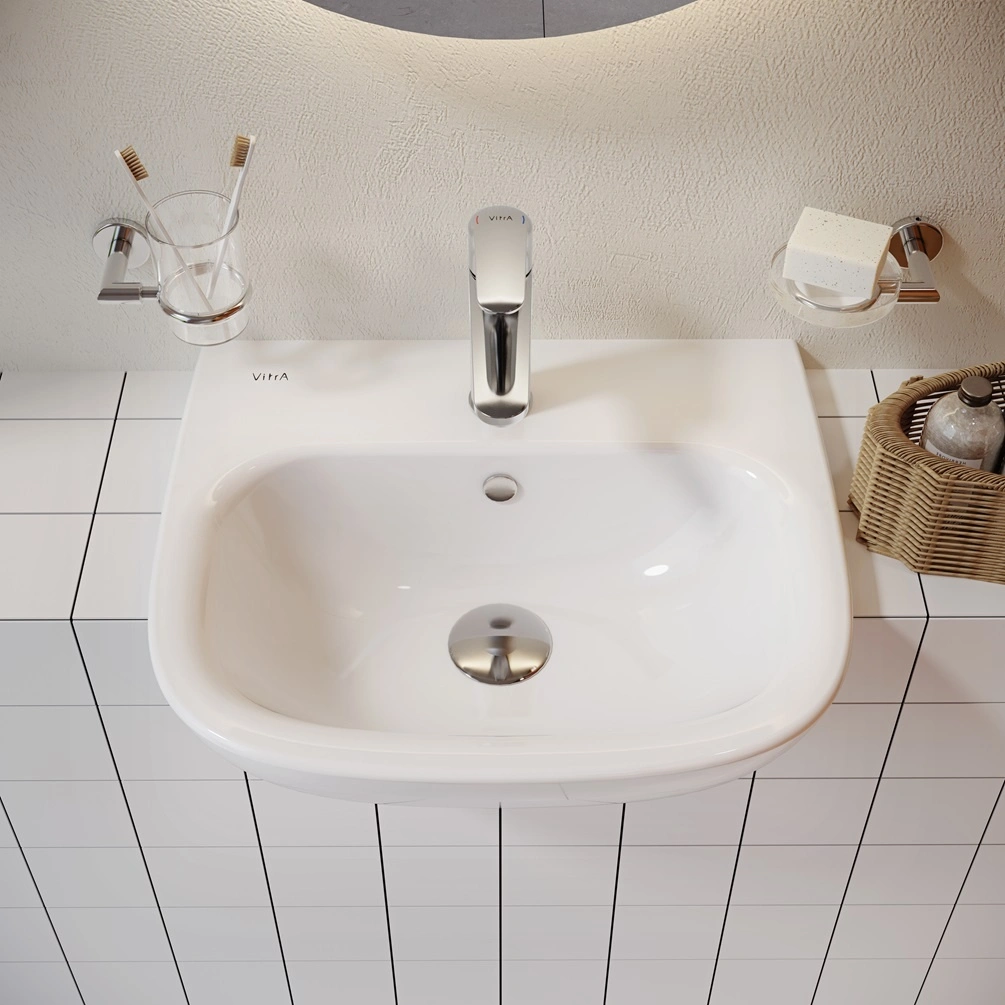
Semi-recessed basins help to conserve space, which is a precious commodity in many bathroom interiors. They can be fitted to your existing vanity unit or ledge, removing the need to plan a separate basin fixture or drastically alter your bathroom’s layout. They also offer plenty of under-sink storage, as well as surface space for items such as toothbrushes and hand soap.
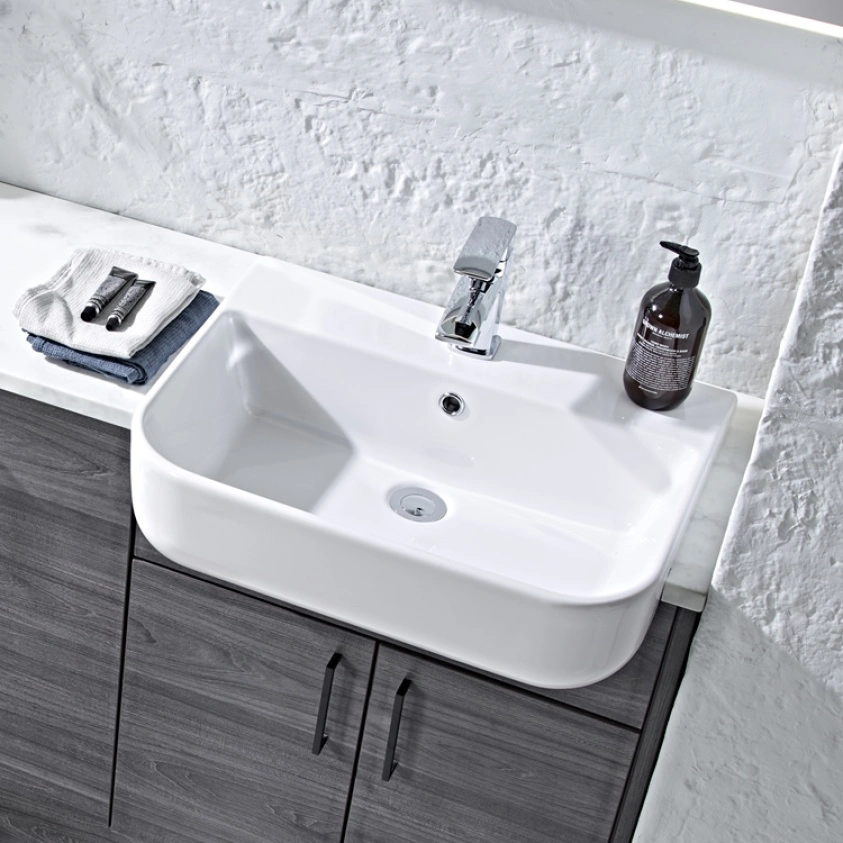
Thanks to the protruding front, semi-recessed sinks negate the need to bend over too far to wash your hands. This is useful for those lacking mobility, offering an accessible solution. The overhang also limits the amount of splashing on your surface, preventing potential water damage on untreated wood. Better still, semi-recessed sinks are very easy to clean, with no awkward crevices or inaccessible parts.
Finally, the overhanging style offers flexibility when it comes to choosing your size. Unlike with a fully recessed basin, your surface doesn’t have to be large enough to accommodate the sink’s entire body. This means you can fit a larger basin onto a smaller cabinet if required.
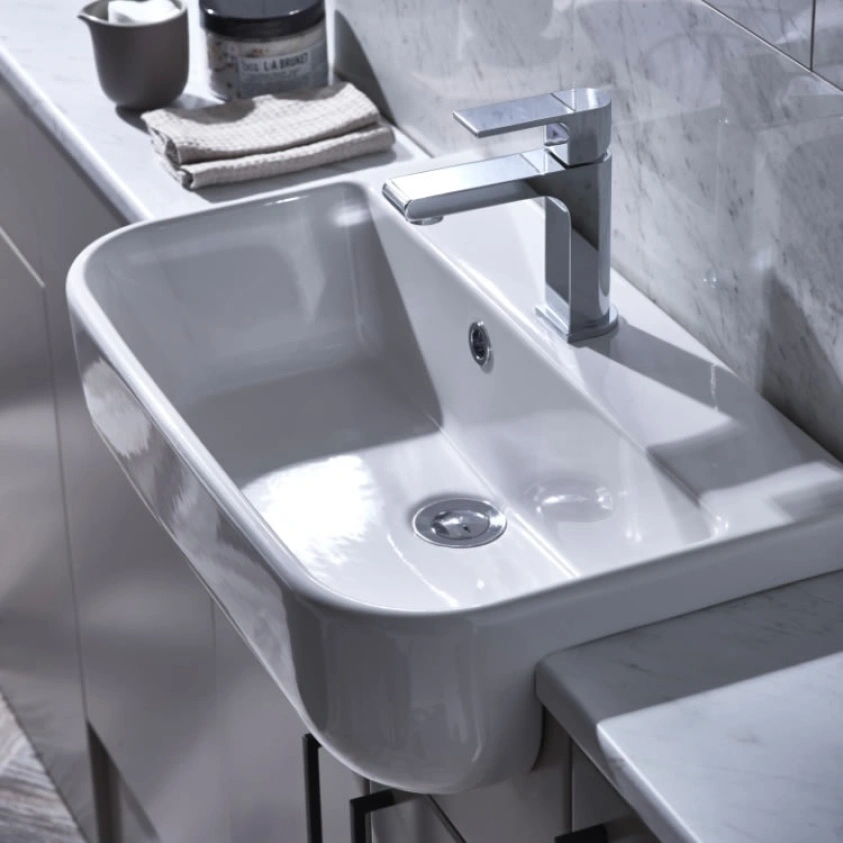
Cons
Despite this vast array of positives, a semi-recessed basin still might not be the right option for you. For starters, some people simply don’t like the protruding look. It’s a bold and deliberate choice, and you may prefer a more conventional fully recessed or countertop basin.
On a similar note, most semi-recessed basins are modern in design. While there are a few traditional models available, the lack of options might lead you to look at a different basin type if you’re opting for the classical vibe.
Another obvious drawback is that semi-recessed basins do, of course, require a work surface. If you don’t already have a cabinet, vanity unit or ledge handy, then this type of sink could be tricky to achieve.
Semi-recessed basins usually include large tap decks, often with predrilled holes. This is fine if you want to use a deck-mounted mixer tap, but it does also limit your options somewhat. If you prefer a wall-mounted tap or tall basin mixer, then a countertop sink might be more up your street.
Lastly, semi-recessed sinks are amongst the most challenging basins to install. They require very accurate measuring and precise cutting of your surface, which shouldn’t be a problem for an experienced professional. If you’re more of a DIY type, however, you’re probably better off choosing a less fiddly alternative.
To summarise:
Pros:
- Stylish, contemporary look
- Hidden plumbing
- Transforms vanity unit & basin into one unified whole
- Conserves space
- Easy to clean
- Accessible
- Reduces splashing around worktop
- Allows for the installation of larger basins onto smaller vanity units and cabinets
Cons:
- The visuals aren’t to everyone’s tastes
- Usually modern or contemporary - few traditional models available
- Not viable if you don’t have room for a work surface
- Less choice in terms of taps
- Difficult to install
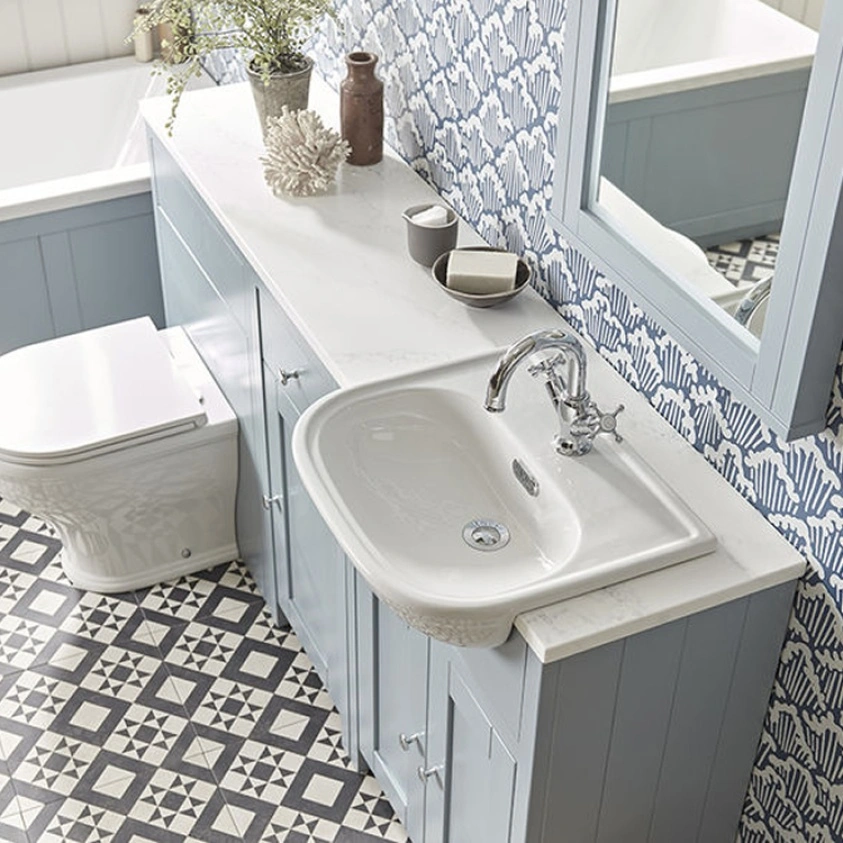
Well, that’s pretty much that regarding semi-recessed sinks. Feel free to contact us with any further questions, or why not swing by our Leeds showroom to view our products in person? We’ll see you soon!
